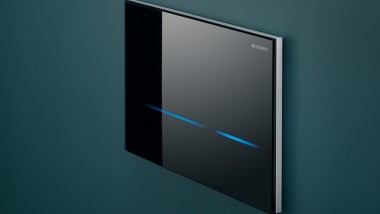Eliminate stains in the bathroom
Descaling agents, nail polish, hair dye: all kinds of liquids and household remedies can cause stains in the bathroom. Some can be avoided by taking a few simple precautions; otherwise, it depends on the right cleaning agent and method. We provide tips and tricks on how to avoid or get rid of stains in the bathroom.
Hair dye
Problem: Accidents can happen pretty easily when you dye or bleach your hair in the bathroom. Hair dye and bleach often contain chemical substances such as hydrogen peroxide. These can eat into coated surfaces on bathroom furniture or plastics such as the toilet lid, resulting in unattractive brown stains which normally cannot be removed.
Solution: Act as fast as you can. When you are dyeing or bleaching your hair, make sure you always have a damp cloth or sponge on hand just in case. Remove and clean the stains completely, otherwise you won’t be able to get rid of them later.
Bathroom cleaner
Problem: Hygiene and bathroom cleaners often contain chlorine. Chlorine can damage many surfaces in the bathroom – the sink, the toilet, and the shower – if the cleaning agent is left on the surface too long. The liquid will then, for example, cause signs of corrosion on faucets and actuator plates or patches of yellow on plastic parts.
Solution: Choose your cleaning agent carefully. Use agents containing acetic acid or citric acid. They are far less aggressive than chlorine. Allow the agent just a short time to work and then remove with a clean cloth and lots of clean water.
Nail polish
Problem: Nail polish and nail polish remover contain solvents, such as pure acetone. Among other things, acetone attacks plastics and coated surfaces in the bathroom. In a worst-case scenario, this kind of make-up stain can result in the surfaces blistering.
Solution: If a bottle of nail polish or nail polish remover leaks or the liquid somehow gets onto plastic surfaces, there is only one thing to do: you must react quickly and not let it dry. Use a soft, dry cloth and carefully dab the nail polish stain. Do not rub as this would spread the nail polish.
Descaling agents
Problem: Descaling agents can leave really nasty stains on faucets because they usually contain acids such as hydrochloric acid. At the end of the day, you may have been able to remove the limescale, but you have caused far worse stains in the bathroom.
Solution: Always observe the application time of the descaling agent and then rinse the affected areas with lots of water. But you can in fact counteract the limescale much earlier. Instead of descaling, you should always rub damp faucets dry with a soft microfiber cloth. This is how to avoid the unsightly white limescale deposits from forming in the first place.
Toilet cleaning agents
Problem: Toilet cleaning agents and toilet tabs can cause yellow or blue stains on the toilet lid and seat. And the stains are virtually impossible to get rid of once they are there. An irritating problem in your bathroom.
Solution: Only use toilet cleaning agents and tabs in the toilet bowl, and avoid contact with other surfaces in the bathroom. If they do get onto plastic parts of the toilet, always wash the traces away quickly with a damp, absorbent cloth or sponge to prevent stains from forming in the first place.



